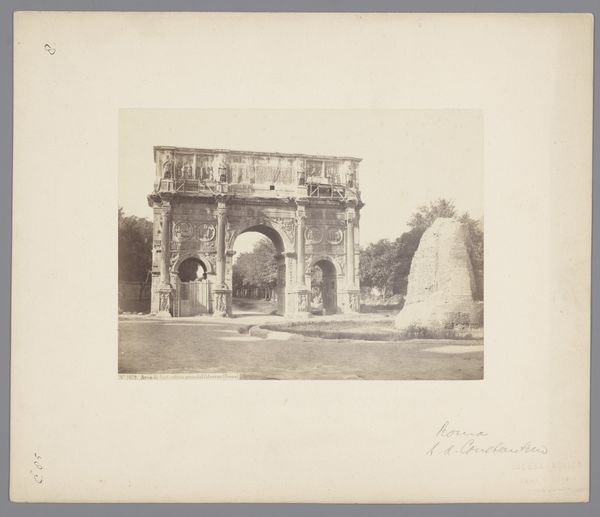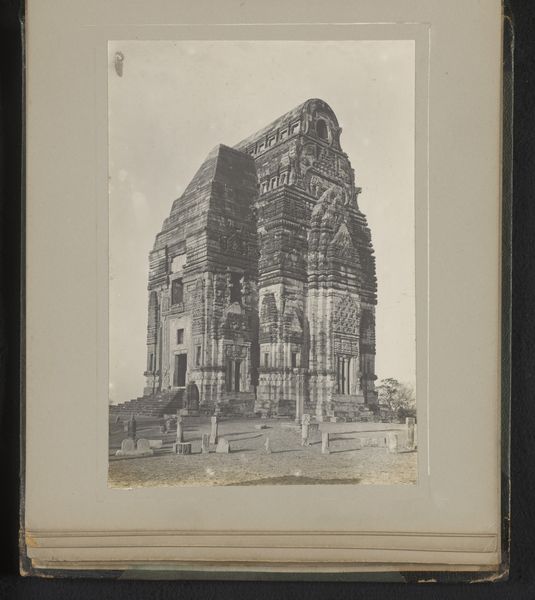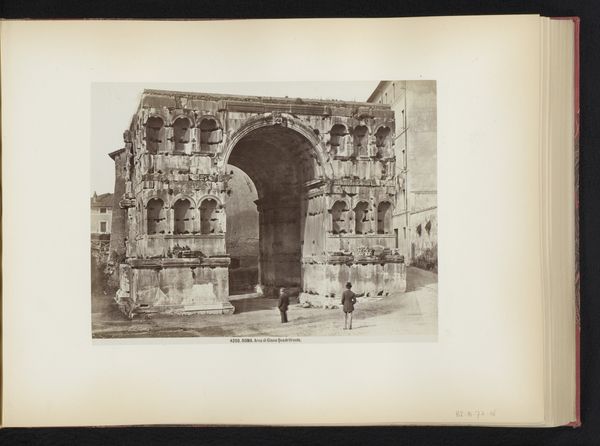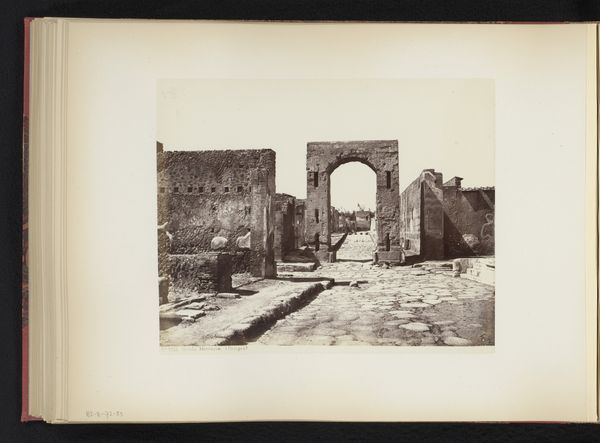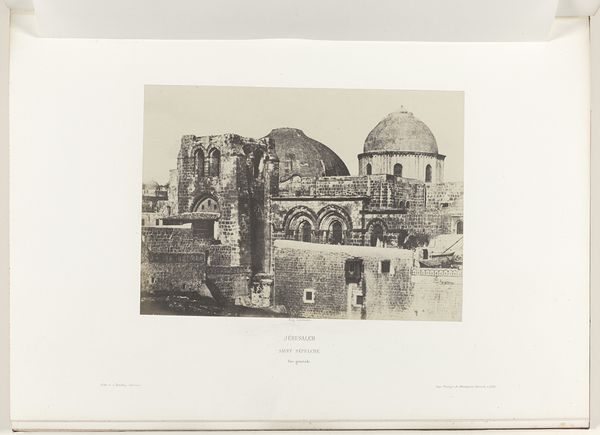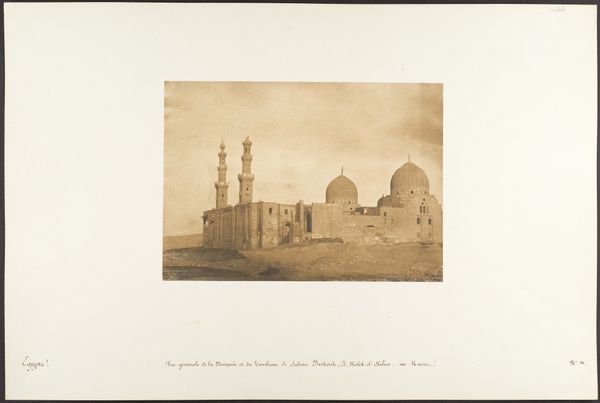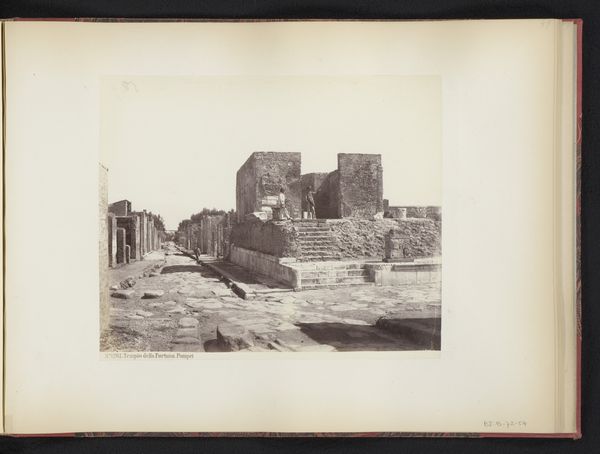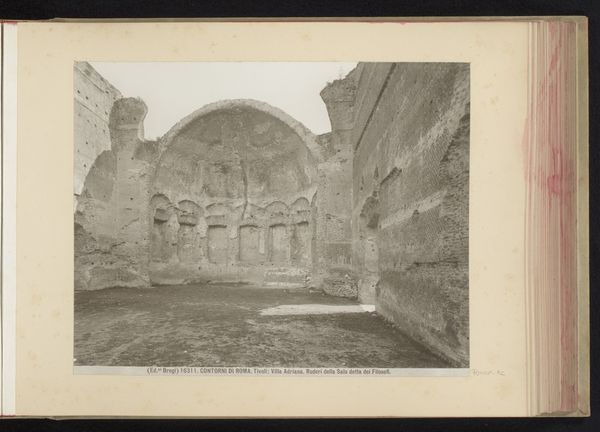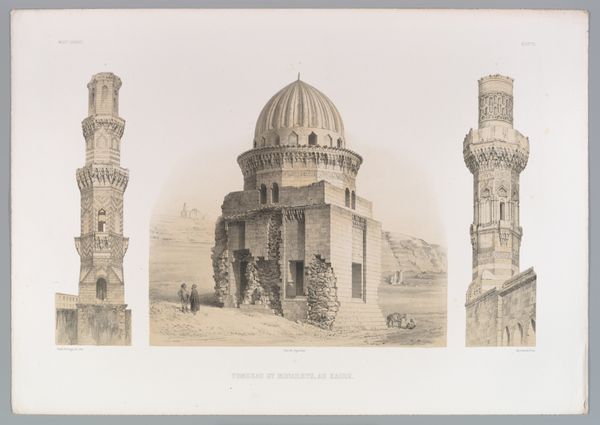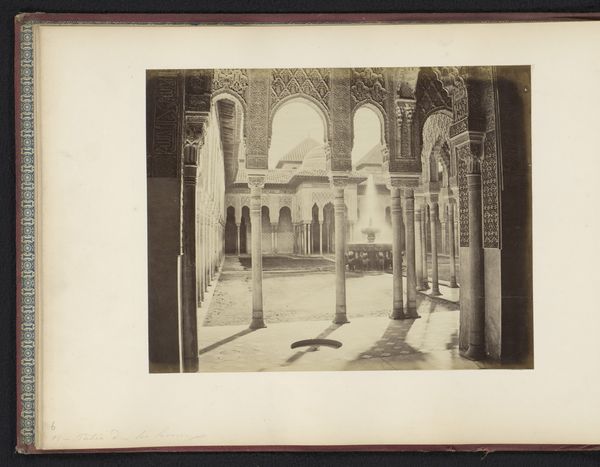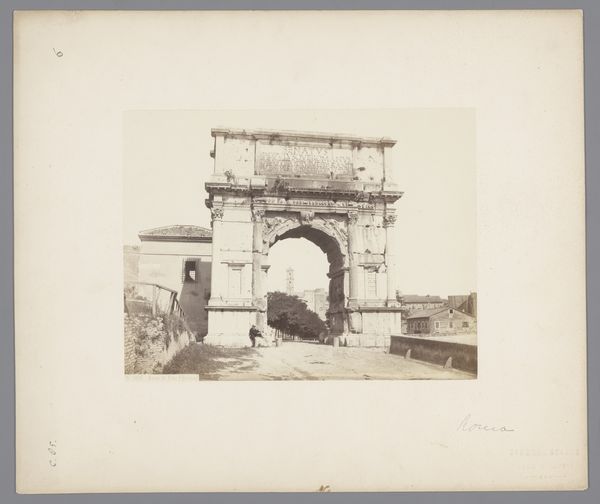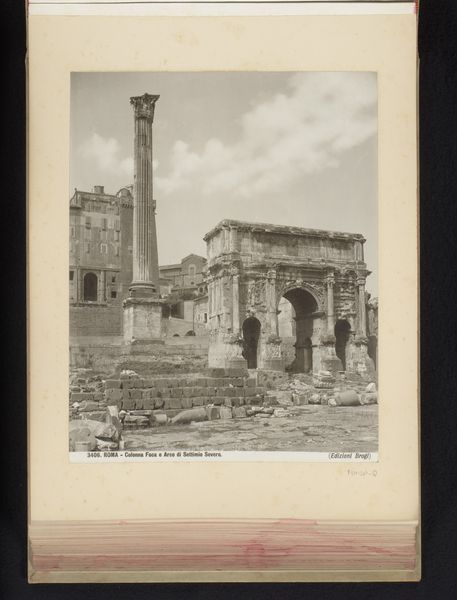
Gezicht op gebouwen bij de trappen aan de oever van de Ganges te Haridwar before 1867
0:00
0:00
photography, albumen-print
#
landscape
#
photography
#
ancient-mediterranean
#
orientalism
#
cityscape
#
albumen-print
Dimensions: height 182 mm, width 231 mm
Copyright: Rijks Museum: Open Domain
Curator: This photograph, taken before 1867 by Thomas George Glover, offers a "View of Buildings by the Steps on the Banks of the Ganges at Haridwar." It's an albumen print, a popular photographic process at the time, known for its fine detail and subtle tonal range. Editor: It's like stepping back in time. The light, the architectural details—it all feels incredibly serene and still. But, also, maybe a touch…colonial? Am I off base? Curator: No, not at all. Glover worked within the British Empire, and his images circulated widely in Europe, shaping perceptions of India. Photography during this era was deeply intertwined with imperial power. Consider the careful composition: the temple structure is imposing, certainly, yet the people are equally prominent in their everyday rituals. Editor: Yes, you notice it. Those figures at the river’s edge are fascinating! I wonder what their stories are. To me this scene is almost like an illustration for an adventure book—or something out of Kipling. Curator: That's a great observation. The image encapsulates both the exoticism that appealed to Western audiences and the intimate reality of life in Haridwar. The "Orientalist" style romanticized and, yes, sometimes misrepresented, Eastern cultures. But at the same time the city's ancient heritage as a spiritual site becomes clear as the viewer can grasp the social activities going on there. Editor: It’s those inherent tensions, isn’t it, that make this piece compelling. The artistry versus the agenda. Makes you want to keep looking and unravel its meaning. The more you consider it, the less innocent and more intriguing it seems! Curator: Exactly. The photograph provides valuable documentation, of course, but it also prompts us to reflect on the complex relationships between photography, history, and cultural representation. And that’s exactly what makes this historical photograph such a powerful document for our present. Editor: Indeed. It reminds us that every picture, no matter how still it seems, has a narrative to unpack. What a place!
Comments
No comments
Be the first to comment and join the conversation on the ultimate creative platform.
